SMART Blog
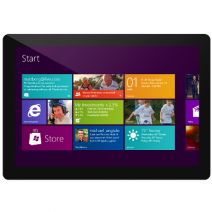 Smartphones and tablets are the new norm. Most professionals have begun to utilize mobile devices to accomplish tasks when they are away from their work PC. Not to say that these devices offer all that much in the way of productivity. Sure, there are plenty of software titles either ported over from the PC or developed directly for the mobile environment, but sometimes these titles don’t offer the functionality, or they take up too many of the device’s resources to be of much use. With these variables to consider, manufacturers are searching for the best way to deliver devices with enhanced productivity capabilities, right out of the box. One of these manufacturers is Microsoft.
Smartphones and tablets are the new norm. Most professionals have begun to utilize mobile devices to accomplish tasks when they are away from their work PC. Not to say that these devices offer all that much in the way of productivity. Sure, there are plenty of software titles either ported over from the PC or developed directly for the mobile environment, but sometimes these titles don’t offer the functionality, or they take up too many of the device’s resources to be of much use. With these variables to consider, manufacturers are searching for the best way to deliver devices with enhanced productivity capabilities, right out of the box. One of these manufacturers is Microsoft.
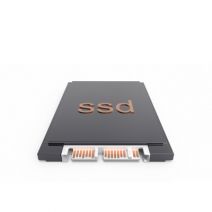 If you’re in the market for a new computer, then you’re going to have to make a decision: Go with a traditional hard drive (HDD), or a solid state drive (SSD). While a computer equipped with an HDD will cost you less money, an SSD promises to faster speeds and a longer lifespan. This begs the question, is SSD worth the extra money?
If you’re in the market for a new computer, then you’re going to have to make a decision: Go with a traditional hard drive (HDD), or a solid state drive (SSD). While a computer equipped with an HDD will cost you less money, an SSD promises to faster speeds and a longer lifespan. This begs the question, is SSD worth the extra money?
 This subject isn’t very interesting outside of hospital administrators… or for hospital administrators, but there’s no denying that healthcare is one of the most important industries in our society today; and one that is having a technology overhaul at present. The influx of cheaper and more powerful technology is surely going to be a driving force for healthcare in the 21st century. Under the Health Information Technology for Economic and Clinical Health Act (HITECH), the United States government has followed the lead of other Western nations in forcing entities to upgrade their healthcare practice’s information technology for the betterment of patients, insurers, and health care providers.
This subject isn’t very interesting outside of hospital administrators… or for hospital administrators, but there’s no denying that healthcare is one of the most important industries in our society today; and one that is having a technology overhaul at present. The influx of cheaper and more powerful technology is surely going to be a driving force for healthcare in the 21st century. Under the Health Information Technology for Economic and Clinical Health Act (HITECH), the United States government has followed the lead of other Western nations in forcing entities to upgrade their healthcare practice’s information technology for the betterment of patients, insurers, and health care providers.
 As we near the end of 2014, the topic of IT budgeting is on everyone’s minds. How much are you willing to spend, and on what? In order to provide optimal figures for the new year, you need to take some time to plan out what you think you need to spend, versus how much you’re willing to spend, on IT. Thankfully, you don’t have to do this alone.
As we near the end of 2014, the topic of IT budgeting is on everyone’s minds. How much are you willing to spend, and on what? In order to provide optimal figures for the new year, you need to take some time to plan out what you think you need to spend, versus how much you’re willing to spend, on IT. Thankfully, you don’t have to do this alone.
 IT support is heavily reliant upon communication between both parties involved. Without both sides being on the same page, IT support miscommunications are far more likely to happen. Sometimes you just can’t help but laugh at poor communication skills, as seen in the 2001 movie Zoolander. But thankfully, these situations don’t arise too often in the non-fictional universe… right?
IT support is heavily reliant upon communication between both parties involved. Without both sides being on the same page, IT support miscommunications are far more likely to happen. Sometimes you just can’t help but laugh at poor communication skills, as seen in the 2001 movie Zoolander. But thankfully, these situations don’t arise too often in the non-fictional universe… right?
 As a business owner, you have an obligation to keep your data and network files safe from prying eyes and criminals. The latest threats, like the new Cryptowall 2.0 ransomware, can be a difficult hurdle to jump, especially when they are disguised and designed to ruin you. Thankfully, you don’t have to take on these threats alone.
As a business owner, you have an obligation to keep your data and network files safe from prying eyes and criminals. The latest threats, like the new Cryptowall 2.0 ransomware, can be a difficult hurdle to jump, especially when they are disguised and designed to ruin you. Thankfully, you don’t have to take on these threats alone.
 Who's in charge of making the decisions in your business concerning technology? Ideally, you want an internal IT manager or a CIO with IT experience calling the tech shots. However, many businesses don't have this luxury. According to a CompTIA survey from last November, 48 percent of businesses have managers making decisions about technology implementation that don't have IT experience.
Who's in charge of making the decisions in your business concerning technology? Ideally, you want an internal IT manager or a CIO with IT experience calling the tech shots. However, many businesses don't have this luxury. According to a CompTIA survey from last November, 48 percent of businesses have managers making decisions about technology implementation that don't have IT experience.
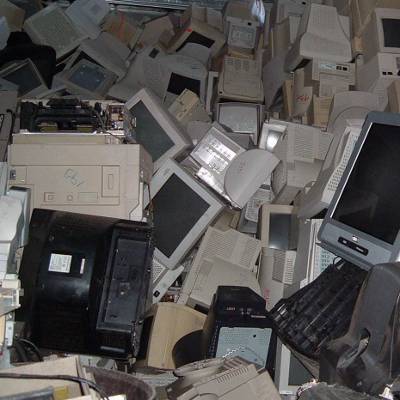 Remember when you upgraded to a flat screen TV or monitor just a few years ago? You may have marveled at the increased picture quality and celebrated getting rid of your old and bulky equipment, but do you know what happened to the old CRT monitor after you threw it out? Unfortunately, the answer doesn't bode well for the environment.
Remember when you upgraded to a flat screen TV or monitor just a few years ago? You may have marveled at the increased picture quality and celebrated getting rid of your old and bulky equipment, but do you know what happened to the old CRT monitor after you threw it out? Unfortunately, the answer doesn't bode well for the environment.
 On May 7, 2014, the U.S. Securities and Exchange Commission (SEC) released a news alert declaring Bitcoin, and all other virtual currencies insecure and unsafe. Due to a rise in Bitcoin popularity, many investors and business owners like to use it for worldwide transactions. But, how safe is it, and how likely are you to run into a Bitcoin fraud scheme?
On May 7, 2014, the U.S. Securities and Exchange Commission (SEC) released a news alert declaring Bitcoin, and all other virtual currencies insecure and unsafe. Due to a rise in Bitcoin popularity, many investors and business owners like to use it for worldwide transactions. But, how safe is it, and how likely are you to run into a Bitcoin fraud scheme?
 GameOver Zeus, a member of the Zeus family of malware, has been discovered and disrupted by the Department of Homeland Security, Federal Bureau of Investigation, and Department of Justice. But, this is only a temporary respite from the danger the malware poses - in two weeks, the threat will be back, and very much alive.
GameOver Zeus, a member of the Zeus family of malware, has been discovered and disrupted by the Department of Homeland Security, Federal Bureau of Investigation, and Department of Justice. But, this is only a temporary respite from the danger the malware poses - in two weeks, the threat will be back, and very much alive.
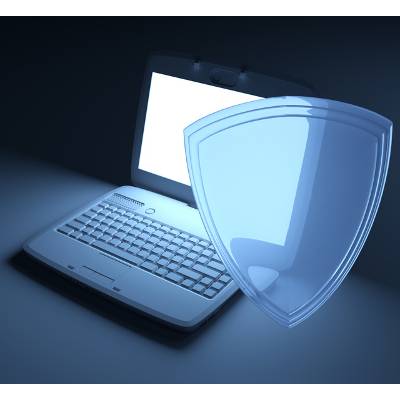 Take a moment to consider your answer to this question, "What would you do if all of your business's data was somehow lost overnight?" How would you react, and what would you do about it? Your data is valuable, so much in fact that your business would be lost without it, and likely wouldn't be able to run properly.
Take a moment to consider your answer to this question, "What would you do if all of your business's data was somehow lost overnight?" How would you react, and what would you do about it? Your data is valuable, so much in fact that your business would be lost without it, and likely wouldn't be able to run properly.
 Many websites around the world are still suffering from the nasty little bug called Heartbleed that we covered last month. This prompted over 30,000 TLS/SSL certificates to be revoked and reissued, but many of them were reissued with the same keys. If this was going to happen, why revoke and reissue them in the first place? They're still just as vulnerable as before, since Heartbleed could have leaked those same keys weeks ago.
Many websites around the world are still suffering from the nasty little bug called Heartbleed that we covered last month. This prompted over 30,000 TLS/SSL certificates to be revoked and reissued, but many of them were reissued with the same keys. If this was going to happen, why revoke and reissue them in the first place? They're still just as vulnerable as before, since Heartbleed could have leaked those same keys weeks ago.
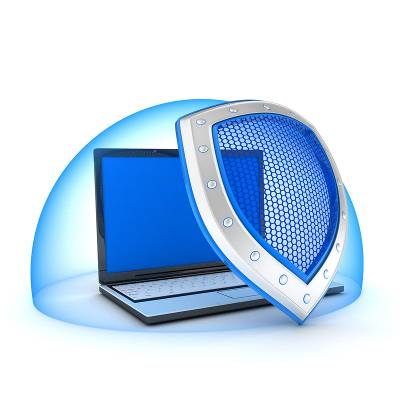 In December 2013, retail superpower Target was the target (hehe) of a massive data breach that could have affected as many as 110 million customers. On Monday, May 5, 2014, the CEO of Target, Gregg Steinhafel, announced that he would be stepping down, no doubt a result of the chaos that engulfed his company in the aftermath of this data breach. Target's CFO, John Mulligan, has stepped in as interim CEO until the position is filled once again.
In December 2013, retail superpower Target was the target (hehe) of a massive data breach that could have affected as many as 110 million customers. On Monday, May 5, 2014, the CEO of Target, Gregg Steinhafel, announced that he would be stepping down, no doubt a result of the chaos that engulfed his company in the aftermath of this data breach. Target's CFO, John Mulligan, has stepped in as interim CEO until the position is filled once again.
 Mobile devices are designed for different purposes than the big, bulky desktops are. The Chrome operating system of the Google Chromebook is a perfect example of this - it looks like nothing but a browser with a keyboard. Sure, it can't do everything a real computer can do, but it sure can do a lot more than some people give it credit for.
Mobile devices are designed for different purposes than the big, bulky desktops are. The Chrome operating system of the Google Chromebook is a perfect example of this - it looks like nothing but a browser with a keyboard. Sure, it can't do everything a real computer can do, but it sure can do a lot more than some people give it credit for.
 How much paper and ink does your company use every week? Every month? Every year? More importantly, how much does this wind up costing your company in the long run? According to a study by 14 year-old science fair wiz Suvir Mirchandani, it was discovered that his Pittsburgh-area school district could reduce ink consumption by 24 percent and save an average of $21,000 a year by simply switching fonts. That's half of what the average American's annual salary is!
How much paper and ink does your company use every week? Every month? Every year? More importantly, how much does this wind up costing your company in the long run? According to a study by 14 year-old science fair wiz Suvir Mirchandani, it was discovered that his Pittsburgh-area school district could reduce ink consumption by 24 percent and save an average of $21,000 a year by simply switching fonts. That's half of what the average American's annual salary is!
 It's no surprise that technology is taking over our lives. It's everywhere; from the workplace to every inch of our homes, new technology exists where it wouldn't have twenty years ago. Bluetooth-connected kitchen appliances allow their owners to turn them on and off from a distance. Cars can connect to the Internet. Google has produced glasses that allow you to browse the Internet. There are tons of innovative, new inventions that have had a huge impact on the way small business owners manage their workplaces, but nothing can compare to the significance of being able to receive text files from anywhere in the world via email and fax.
It's no surprise that technology is taking over our lives. It's everywhere; from the workplace to every inch of our homes, new technology exists where it wouldn't have twenty years ago. Bluetooth-connected kitchen appliances allow their owners to turn them on and off from a distance. Cars can connect to the Internet. Google has produced glasses that allow you to browse the Internet. There are tons of innovative, new inventions that have had a huge impact on the way small business owners manage their workplaces, but nothing can compare to the significance of being able to receive text files from anywhere in the world via email and fax.
 It's the nature of trends for people to want to capitalize on them, which means that many sellers of what's trendy may have little experience working with the trends that they're selling. As a business looking to take advantage of the latest technology trends, it's important that you're not bamboozled by a smooth talking technology marketer with no depth.
It's the nature of trends for people to want to capitalize on them, which means that many sellers of what's trendy may have little experience working with the trends that they're selling. As a business looking to take advantage of the latest technology trends, it's important that you're not bamboozled by a smooth talking technology marketer with no depth.
 There's nothing quite like the feeling of getting scammed, and the scammers of today love using technology to rip you off and leave you with that sinking scammy feeling. The best way to avoid scams is to be proactive and know what to look for. New to your list of scams to be on the look out for are fake apps.
There's nothing quite like the feeling of getting scammed, and the scammers of today love using technology to rip you off and leave you with that sinking scammy feeling. The best way to avoid scams is to be proactive and know what to look for. New to your list of scams to be on the look out for are fake apps.





